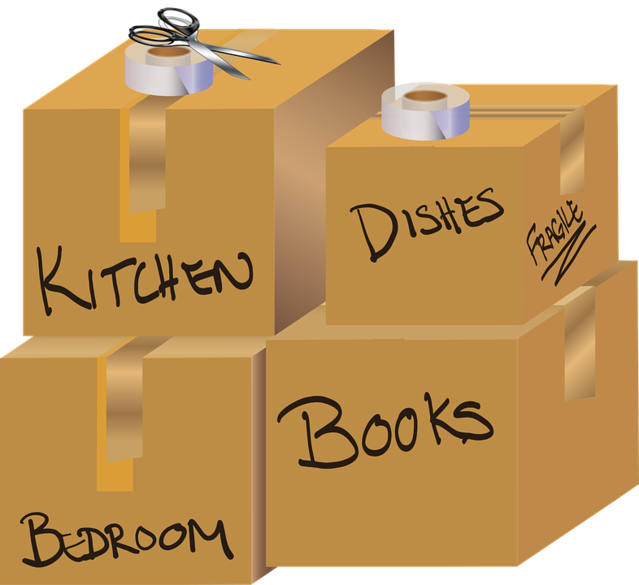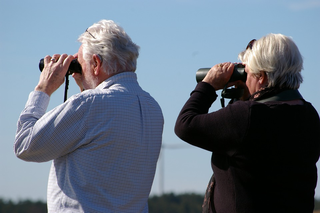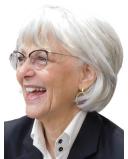Stress
Moving to a New Home Is a Top Stressor
A Personal Perspective: When my body rebelled, I knew I had hit a limit.
Posted July 3, 2022 Reviewed by Jessica Schrader
Key points
- A residential move has ranked among the highest of stressors since Holmes and Rahe developed their original measure.
- The demands of stressors on the body pose a threat to physical, psychological, relational, and spiritual well-being.
- Managing stressors with conscious choices, assignment of tasks, and a focus on a future vision is helpful in navigating stress's toll.

The last eight months for my husband and I have been loaded with challenges—physically, mentally, emotionally, spiritually, and, finally, residentially. Last October, David began having difficulty crossing his left leg over his right. By January, he required a walker, and we had a diagnosis and treatment plan: effects of earlier radiation now needed full hip replacement surgery.
We adapted to changing mobility and conditions. Our second bedroom became The Sun Room, where we shared breakfasts and lunches, limiting his need to navigate stairs in our three-floor condo to once a day. I cheerfully appreciated the extra exercise and new views.
Surgery took place at the end of January. Complications that followed made it clear that living in the condo we had adored for 19 years was no longer sustainable. It was time to simplify, reduce the amount of space we occupied, and reorganize our life together to prepare for its next chapter.
Following 18 nights in the hospital, David progressed to rehab in a local nursing home. Instead of staying in a hotel so that I could visit him each day, I could now sleep in our bed, easily obtain the nursing home’s visitors' daily COVID tests, and drive only 30 minutes to be with him each day. We had the perfect opportunity to think through the next steps. It was clear moving would be good for both of us. And if we were going to move, I would need to take charge of that task while he concentrated on regaining strength, mobility, and stability.
The first decision was where we would go. Neither assisted living nor “levels of care” seemed necessary at this time. We were not ready to give up living in a community that featured diversity in all its forms, especially that of age. A nearby one-floor apartment seemed the best solution. When I found one that I liked, featuring a small “bonus” space where I could write in solitude, David urged me to lease it quickly, while my location choice in the new construction was available, even though he was still working on navigating stairs so that he could return home to our condo.

The next task was to sell our home. Luckily, a friend of my daughter’s was an excellent Realtor in the area. She came out to the nursing home along with her COVID test that Thursday. We signed a listing with her, limiting visits to one broker with one client at a time over a three-day weekend. The Realtor and I “staged” the house that Saturday and Sunday, basically hiding clutter, family photos, many of our idiosyncratic treasures. On Monday, a photographer took pictures; on Wednesday, they announced “Coming Soon” on the internet. Friday showings began; and Sunday at 6 p.m. new offers were closed. That night we selected our buyers while on a conference call, David from his bed on the other side of the county, and our Realtor and I speaking on the home phone on our kitchen table, printouts of the several offers scattered around the table. By Thursday, signed contracts made us smile.
Five days later, David returned home. He had learned to navigate stairs using a cane, a step up into our stall shower, and use of supports to get himself into and out of my small Subaru.
For the next 10 weeks, we offered our grown children and our grandchildren (many of them grown as well), things they might want from our home, items that might be useful in their own lives, or simply reminders of moments we had shared across the nineteen years of their growing up. His older son was partial to furniture that had once been on my husband's converted barge, the one moored at the foot of the Orangerie in the center of Paris. His wife helped me pack up crystal and china for their daughter. My son and his wife took the rug that once covered a floor in my husband’s Parisian law offices, but that they knew best as the background beneath block-building and pretend tea parties as their daughters grew from infancy to maturity. My daughter had an uncanny knack for identifying objects she had grown up with, that brought back happy memories from her own colorful childhood, while her husband, an avid gardener, updated his stash of gardening tools and happily took our grill as a bonus. Their older daughter was delighted to claim the queen-sized bed, a perfect complement to her recent graduation from college. Her sister put on a hat from David’s large collection; the remainder of his stash, ranging from a Greek fisherman’s cap to a chef’s bonnet, went to a local children’s theater group.
Slowly we found homes for more than half of our belongings as we prepared to begin our new life together, one with as much physical, mental, and emotional space as possible to create opportunities to care for ourselves and each other and to love the life we are able to continue living.
There is a quote from our religion: “The truly wealthy [person] is [he] who is happy with what [he] has.” We moved in mid-June and each day has brought gratitude, joys, and discoveries. Moving, listed among the most severe of stressors since Holmes and Rahe developed the first Social Readjustment Rating Scale in 1967, were many. (In 2020, one study claimed moving even surpassed death of a spouse and divorce in stressful impact.)
We tried to minimize the toll by planning, organizing, hiring competent movers and other help, without missing a single medical appointment. Nonetheless, the demands took a toll. My yoga-tuned alignment fell into disrepair, sending me to a physical therapist for help, while David’s body rebelled, developing an infection that slowed him down. It was yet one more “speed bump” in his journey to recovery.

Those urgencies are now history. We now embrace our new home, village, and community, all offering local adventures. Sometimes adaptation has run its course and investing in the future is the best way to let go of an unsustainable present. Just remember its transitional demands do end.
Copyright 2022 Roni Beth Tower.
References
Holmes, T. H. & Rahe, R. H. (1967) The Social Readjustment Rating Scale. Journal of Psychosomatic Research. Vol. 11, pp. 213 to 218. https://doi.org/10.1016/0022-3999(67)90010-4


